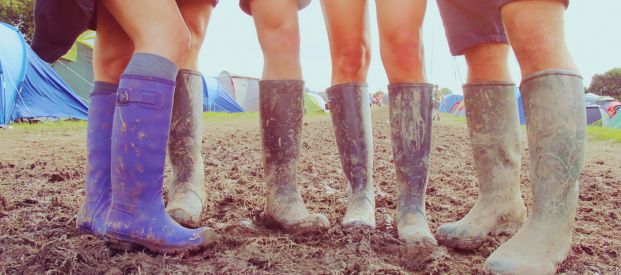Glastonbury Festival – From the Beginning to the Current Day – A History Through the Years
Traditionally taking place around the summer solstice in June, the Glastonbury Festival has been delighting fans of music and the performing arts for over 54 years. In this blog post we will take a whirlwind look at the history of Glastonbury and some of its most memorable moments.
In the beginning
Glastonbury’s origins date back to 1970 when dairy farmer Michael Eavis decided to hold a music festival at his farm in Pilton, Somerset. Michael and his wife Jean had been inspired by the Bath Festival of Blues and Progressive Music, which took place in Shepton Mallet, Somerset, in June 1970. The inaugural Glastonbury festival was known as the Pilton Pop, Folk and Blues Festival and it was hosted at the Eavis family farm, Worthy Farm, with 1,500 attendees. Admission was £1, which included free camping and a pint of milk. The headline act was Marc Bolan’s T. Rex.
The early years
In 1971 the festival returned, this time renamed as the Glastonbury Fair. Michael Eavis was assisted by co-founders Andrew Kerr and Arabella Churchill, both of whom helped to fund the event. The date was changed to coincide with the summer solstice and entrance was free. This year saw the introduction of the famous Pyramid Stage, which was inspired by the Great Pyramid of Giza, and is still the main stage where acts perform to this day.
The 1980s
In 1979, the festival re-emerged as a three-day event, but the organisers experienced a huge financial loss, and it wasn’t held again until 1981 when it was named the Glastonbury Festival. During the 1980s, the festival grew to include additional stages and tents, while attendance numbers swelled to 65,000. Memorable performers during this time included Van Morrison and the Cure. The festival helped to raise thousands of pounds for the Campaign for Nuclear Disarmament (CND) and other charities, but it was also beset by local authority licensing problems.
The 1990s
The 1990s cemented the Glastonbury Festival in place as a major cultural event, combining music with theatre, dance and circus acts. During this time, Michael Eavis formed a longstanding partnership with Greenpeace, Oxfam and Water Aid, which signified a commitment to environmental issues. In 1994 the festival was televised for the first time while 1997 became the infamous “Year of the Mud” thanks to torrential rain, which didn’t put off the 100,000-strong crowd. Memorable musical performances during the 90s came from the likes of Pulp, Oasis, Blur and Radiohead.
The 2000s and beyond
As Glastonbury’s success continued to grow, it began to face security problems and mass overcrowding. The introduction of the “super fence” in 2002 significantly reduced gatecrashing, making the event a safer and more enjoyable experience for festival-goers. 2005 heralded another muddy year due to two months of rainfall occurring in just a few hours. The headline acts became ever more diverse, as Michael and Jean’s daughter Emily took on the organisation of the event, with performances ranging from Paul McCartney to Jay-Z.
Throughout the 2010s, Glastonbury continued to evolve and innovate, while staying true to its roots. Standout performances came from Beyoncé, the Rolling Stones and Stormzy, while millions of pounds from ticket sales were donated to charitable causes.
The festival continues to thrive, year upon year, providing a space for festival-goers to enjoy a diverse range of music and performing arts. It continues to champion environmental issues and fosters a spirit of inclusion and community. From its humble beginnings in 1970, Glastonbury has grown to become a truly global cultural phenomenon.













helped with my work